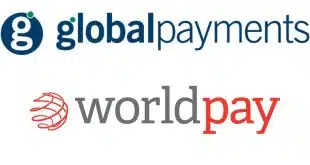The birth of cryptocurrencies and the digitization of payments have led central banks worldwide to consider launching their own digital dollars.
These central bank digital currencies (CBDC) could either supplement or replace government-issued cash as legal tender. Proponents say the tokens could offer benefits to citizens, governments, and businesses, while others have concerns about the effects they could have on privacy and the commercial banking and payments industry.
As of now, almost 50 countries have a central bank digital currency in some stage of development, and another 40 are researching the idea, according to the nonprofit Atlantic Council. The Web site CBDCtracker.org lists five countries that have canceled their CBDC currencies, including Finland, which launched a card-based program called Avant in 1992 to replace cash for small transactions.
A central bank digital currency would differ from cryptocurrencies and other digital currencies in that it would be a liability of the central bank and would have the same value as the national currency. In other words, the digital dollar would not be worth more or less than the paper dollar. So, it would not fluctuate like many cryptocurrencies do and it would not need backing, like stablecoins, which are cryptocurrencies pegged to a specific value.
In a document on CBDC, the Bank of France specifies that CBDCs should be able to be used in peer-to-peer transactions and be issued only if the social benefits outweigh the costs.
But if central banks around the world were to launch digital dollars that were liabilities on themselves, this could shake up the banking and payments industry. Banking is about taking in deposits and lending them out to make profits. If deposits, particularly those of consumers, were held by the central bank, commercial banks could face funding issues.
The Independent Community Bankers of America raised this and other concerns in a blog post that discusses the different models for CBDCs. It points out that banks risk disintermediation, depending on the model used for distributing CBDCs.
The current banking and payments systems should keep a close eye on the development of CBDCs and think about how they might adjust their businesses based on the different models that appear and as countries move through various stages of adoption. The early adopters should be seen as labs for a new payments environment.
Another hurdle for CBDCs is adoption. Many of the biggest fans of cryptocurrencies want to use them precisely because they are not issued by a central authority and are outside of government structures. Some crypto advocates see CBDCs as a conspiracy to kill off cryptocurrencies.
Citizens concerned about privacy might also want to avoid CBDCs, but if countries force adoption by eliminating other forms of cash, they may not have a choice.
Advocates say CBDCs could help tax collection, law enforcement, and financial inclusion, all while preserving privacy. Members of Congress have floated the idea of Fed accounts as bank accounts for people who have been shut out the banking system by fees or bad credit scores. However, this ignores FDIC research that shows the number-one reason unbanked people don’t have an account is that they don’t have enough money.
When it comes to financial services, particularly for disadvantaged populations, the government and the industry should avoid viewing technology as a kind of panacea. Digital currencies, regardless of the issuer, require additional infrastructure to operate. Given the digital divides that exist in this country and others, central banks should make sure they are not taking away their citizens’ options as they explore those that come with CBDCs.
—Ben Jackson, bjackson@ipa.org





